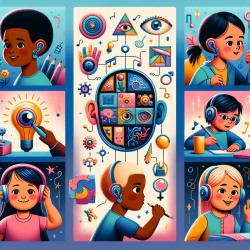Understanding Multisensory Speech Processing: A Path to Better Outcomes
In the world of speech-language pathology, understanding how children process speech is crucial for developing effective therapeutic interventions. A recent study titled "Sex differences in multisensory speech processing in both typically developing children and those on the autism spectrum" provides valuable insights into how children integrate auditory and visual speech signals. This research highlights the importance of considering gender differences when addressing speech processing in both neurotypical children and those on the autism spectrum.
The Study: Key Findings
The study examined how typically developing (TD) children and children with autism spectrum disorder (ASD) process multisensory speech. It found that females, both in the TD and ASD groups, were significantly better at recognizing words under audiovisual conditions compared to males. Interestingly, these gender differences were not observed in neurotypical adults, suggesting that the development of audiovisual integration is delayed in males but catches up in adulthood.
Implications for Practitioners
These findings have significant implications for speech-language pathologists and educators. Understanding that females may have an advantage in processing multisensory speech can guide practitioners in tailoring interventions. Here are some practical steps practitioners can take:
- Gender-Specific Strategies: Consider implementing different strategies for boys and girls. For instance, boys might benefit from additional visual cues or reinforcement in auditory processing tasks.
- Focus on Early Intervention: Since the study suggests a developmental delay in males, early intervention focusing on audiovisual integration could be beneficial.
- Encourage Multisensory Learning: Incorporate activities that promote the integration of auditory and visual information, such as using videos with subtitles or interactive reading sessions.
Encouraging Further Research
The study also emphasizes the need for further research into the underrepresented population of females with ASD. By understanding the nuances of how different genders process speech, researchers can develop more personalized and effective interventions. Practitioners are encouraged to stay informed about the latest research and consider participating in studies that explore these differences further.
Conclusion
Understanding the differences in multisensory speech processing between genders can lead to more effective interventions and better outcomes for children. As practitioners, it is essential to consider these differences and adapt strategies accordingly. By doing so, we can ensure that all children, regardless of gender, receive the support they need to thrive.
To read the original research paper, please follow this link: Sex differences in multisensory speech processing in both typically developing children and those on the autism spectrum.










